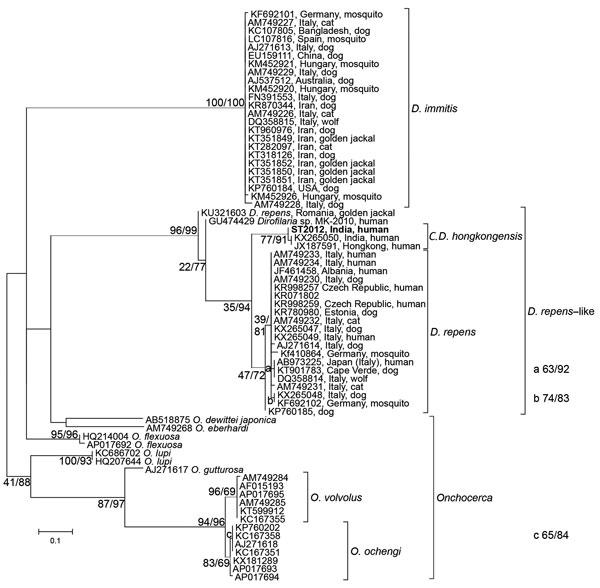Volume 23, Number 8—August 2017
Research Letter
Candidatus Dirofilaria hongkongensis as Causative Agent of Human Ocular Filariosis after Travel to India
Figure

Figure. Phylogenetic analysis of the genus Dirofilaria based on cytochrome C oxidase subunit I gene sequences from a worm surgically extracted from the eye of a patient who had returned to Austria after travel to India. Bootstrap values and results of the Shimodaira-Hasegawa test are shown before and after the slash. The sequence from the current patient is shown in bold, and clusters within Candidatus Dirofilaria hongkongensis, with Dirofilaria repens as the sister taxon. Two samples, classified as Dirofilaria sp. MK-2010 (GenBank accession no. GU474429) and D. repens from Romania (accession no. KU321603), show very high divergence and probably represent different species. The scale bar represents 0.1 substitutions per site. The samples are identified by GenBank accession numbers, country, and host origin, when available. The genera Dirofilaria (D.) and Onchocerca (O.) as well as the Candidatus status (C.) are abbreviated in species names.